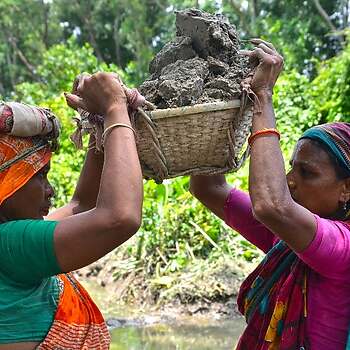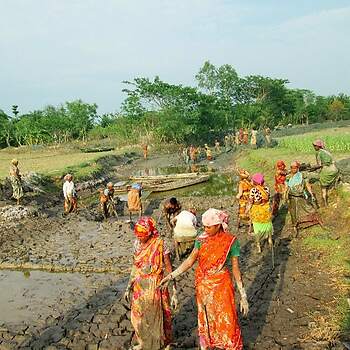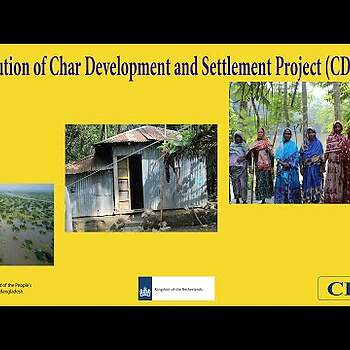Water Management
The next phase of evolution of the Bangladesh water management approach began in the early 1980s when the Government of Bangladesh (GoB) and donor community started to promote community participation in water management as a means to more efficient water management and agricultural production. It was surmised that the supplementary use of minor irrigation in combination with effective flood control and drainage would enable farmers to grow high-yielding varieties by reducing the risk of crop failure from flooding or drought at the beginning and the end of the monsoon season.
Operation and Maintenance (O&M) of water resources schemes was very often a main problem. BWDB was officially responsible for all O&M, however, in practice proper O&M did not take place for various reasons, because of BWDB’s focus on construction and lack of budget for O&M. It was hoped that active participation of local government and beneficiaries in the development and O&M of small-scale water control schemes would help overcome this.
The 1980s saw the push and involvement of donors for BWDB and the GoB to focus on participatory approaches through people’s participation and consideration of the poor and marginalized. The concepts of beneficiary organizations (Water Management Groups) and Labour Contracting Societies (LCSs), see Blue Gold wiki, evolved in parallel in three landmark projects supported by the GoN: the Early Implementation Project (EIP), the Land Reclamation Project (LRP) and the Delta Development Project (DDP). These three projects came to influence the shape and form of the future water management projects in Bangladesh also in the 1990s. Ultimately BWDB’s Guidelines on Participatory Water Management (GPWM) of 2000 evolved from these participatory experiences. The LRP project still continues today as the Char Development and Settlement Project (CDSP). For more on the CDSP, check out this bullet in our topic timeline.
WASH
From 1981 onwards the Dutch funded 12 Sub-Divisional Towns Project (12 DTP) was implemented upgrading and expanding the water supply systems in 12 towns. Based on these experiences, in 1989 preparations were made for a follow-up project, i.e. the 18 District Towns Project, which is further discussed under the next bullet.
These WASH activities supported by the GoN aimed at the successful implementation of water supply projects with DPHE. Although the focus was mainly on the expansion and upgrading of water supply systems, it was realized in this period that an integrated approach to drinking water and public hygiene, including people’s participation, was required to achieve a broader impact.


